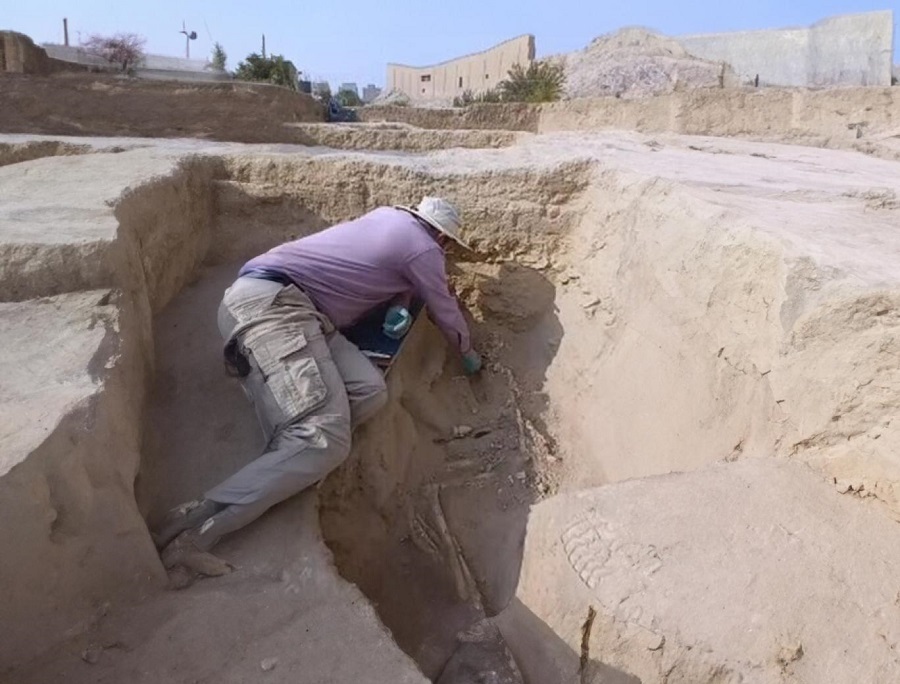
The archaeological team from Shahid Beheshti University, led by Professor Hamidreza Valipour, managed to unearth a 7,000-year-old skeleton of a teenage girl during recent excavations at the ancient site of Cheshmeh Ali in Shahr-e Rey, Tehran. This discovery dates back to the third phase of the Sialk culture, approximately 4300 BC.
According to Professor Valipour, a faculty member at Shahid Beheshti University and head of the Cheshmeh Ali mound excavation team in Rey, this burial was discovered within the architectural remains of the third phase of the Sialk culture at the 7,000-year-old mound. Based on evidence and pottery from the architectural phases, this burial and its skeleton likely date back to the period known as Sialk III (4300 BC). The head of the Cheshmeh Ali archaeological excavation team in Rey also stated that in future seasons, the continuation of these excavations could enhance our understanding of the architectural spaces of this village.
This recent discovery marks the first archaeological examination of Cheshmeh-Ali in nearly three decades. The current excavation project is led by Valipour and his deputy, Iman Mostafapour, with the involvement of professors and students from Shahid Beheshti University’s archaeology department. Valipour’s team hopes that further analysis will shed light on the burial practices, architectural structures, and cultural aspects of daily life during the Sialk III period.
Professor Valipour explained at the ancient site that, Shahid Beheshti University, through a tripartite agreement with the Research Institute of Cultural Heritage and Tourism and the Cultural Heritage Directorate of Tehran Province, established its Archaeological Field Research Center in a building adjacent to Tappeh Mil. The university proposed a five-year program for excavations at the Cheshmeh Ali mound in Shahr-e Rey to the Tehran Provincial Cultural Heritage Directorate and the Research Institute. This problem-oriented program aims to study the cultural evolution of societies from the Neolithic to the Chalcolithic periods and evaluate certain hypotheses and theories regarding the reasons for cultural changes in the Central Plateau of Iran and the variables influencing this process.
The head of the Cheshmeh Ali mound excavation team stated that this research program was approved by the Research Council of the Archaeology Research Institute, and based on this, an excavation permit for the site was issued by the Research Institute of Cultural Heritage and Tourism. These excavations, supported financially and logistically by Shahid Beheshti University, are being carried out with the participation of the university's archaeology faculty members, excavation team members, and undergraduate archaeology students from the 2020 cohort. The work will continue until late November of this year.
It is worth noting that the archaeological excavation of the 7,000-year-old mound in Rey has recently resumed after nearly three decades, coinciding with the establishment of Shahid Beheshti University's Archaeological Field Research Center. The excavation is led by Hamidreza Valipour, with Iman Mostafapour serving as deputy head of the team, and supported by Professors Kouros Mohammadkhani, Negin Miri, Kamyar Abdi, Amir Sadegh Naghshineh, and Ali Bahadori, all faculty members of Shahid Beheshti University's Archaeology Department. The excavation team also includes undergraduate archaeology students from the university's 2020 cohort.


